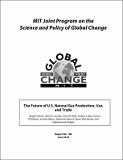| dc.contributor.author | Paltsev, Sergey | |
| dc.contributor.author | Jacoby, Henry D. | |
| dc.contributor.author | Reilly, John M. | |
| dc.contributor.author | Ejaz, Q.J. | |
| dc.contributor.author | O’Sullivan, F. | |
| dc.contributor.author | Morris, Jennifer | |
| dc.contributor.author | Rausch, Sebastian | |
| dc.contributor.author | Winchester, Niven | |
| dc.contributor.author | Kragha, O. | |
| dc.date.accessioned | 2010-08-26T15:04:45Z | |
| dc.date.available | 2010-08-26T15:04:45Z | |
| dc.date.issued | 2010-06 | |
| dc.identifier.uri | http://globalchange.mit.edu/pubs/abstract.php?publication_id=2066 | |
| dc.identifier.uri | http://hdl.handle.net/1721.1/57513 | |
| dc.description | Abstract and PDF report are also available on the MIT Joint Program on the Science and Policy of Global Change website (http://globalchange.mit.edu/) | en_US |
| dc.description.abstract | Two computable general equilibrium models, one global and the other providing U.S. regional detail, are applied to analysis of the future of U.S. natural gas as an input to an MIT study of the topic. The focus is on uncertainties including the scale and cost of gas resources, the costs of competing technologies, the pattern of greenhouse gas mitigation, and the evolution of global natural gas markets. Results show that the outlook for gas over the next several decades is very favorable. In electric generation, given the unproven and relatively high cost of other low-carbon generation alternatives, gas likely is the preferred alternative to coal. A broad GHG pricing policy would increase gas use in generation but reduce use in other sectors, on a balance increasing its role from present levels. The shale gas resource is a major contributor to this optimistic view of the future of gas, but it is far from a panacea over the longer term. Gas can be an effective bridge to a lower emissions future, but investment in the development of still lower CO2 technologies remains an important priority. Also, international gas resources may well prove to be less costly than those in the U.S., except for the lowest-cost domestic shale resources, and the emergence of an integrated global gas market could result in significant U.S. gas imports. | en_US |
| dc.description.sponsorship | American Clean Skies Foundation, with additional support
from the Hess Corporation, the Agencia Nacional de Hidrocarburos (Columbia), the Energy
Futures Coalition, and the MIT Energy Initiative. | en_US |
| dc.language.iso | en_US | en_US |
| dc.publisher | MIT Joint Program on the Science and Policy of Global Change | en_US |
| dc.relation.ispartofseries | ;Report no. 186 | |
| dc.title | The Future of U.S. Natural Gas Production, Use, and Trade | en_US |
| dc.type | Technical Report | en_US |
| dc.identifier.citation | Report no. 186 | en_US |
